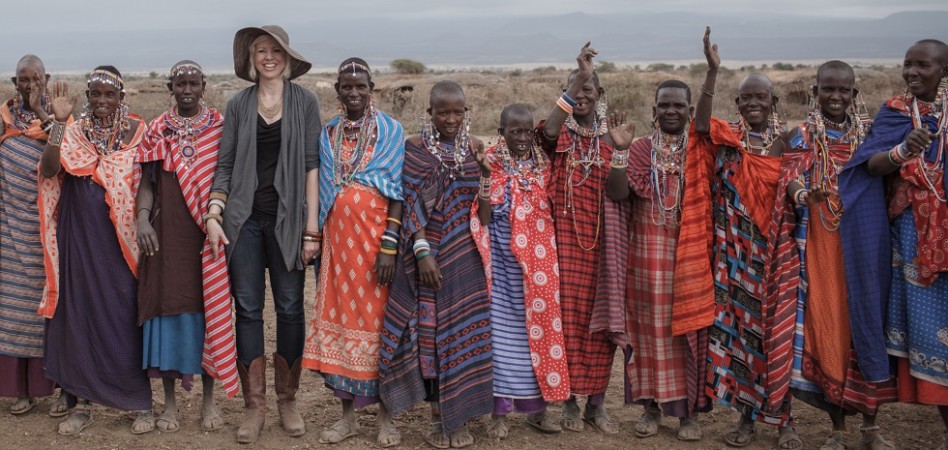We’ve seen the trends of companies becoming more invested in social movements, but how do you balance product, philanthropy and profit?
The panel “What’s More Important, Fashion or Impact” looked at this from the perspective of fashion companies. Joining the panel were Miki Agrawal, CEO of Thinx; Kirsten Dickerson, founder of Raven and Lily; Barrett Ward, CEO of FashionAble; and Brittany Underwood, founder of Akola Project.
All of their companies combine selling fashion for helping third world people, especially women in particular.
Thinx makes “period underwear” designed to help women prevent leaks and stains on their underwear. It’s moisture-wicking, anti-microbial and leak and stain resistant, Agrawal said.
The company also gives reuseable pads to third world countries to help women who would otherwise not have sanitary means during what Agrawal say many call their “week of shame.” Many girls do not go to school during that week to avoid shame and embarrassment.
Raven and Lily primarily sells jewelry and made by more than 1,000 women around the world. Selling the jewelry employs the women who otherwise do not have a place in their country’s working culture.

FashionABLE, Akola and Raven and Lily all create opportunities for less fortunate women. All have programs to help teach women to craft jewelry and/or textiles to sell around the world.
Creating a model that is sustainable while doing the most amount of good is something that all four say is important. The panelists talked about the “TOMS model” and how TOMS was a charitable organization, but was flawed.
They were flooding an area with shoes, yet some local work hard to make shoes for a living. It hurts those individuals, as well as only providing a temporary solution. (Though since, TOMS has changed their model as well.)
Instead, all the panelists provided a more self-sustaining business by providing jobs, and for Thinx by providing reuseable pads, that not only last longer than the typical pad that is used and thrown out, but by allowing girls to go to school and receive an education, unhindered by their periods.
“It becomes a sustainable business model, not a welfare model,” Agrawal said.
Dickerson said that making jewelry for Raven and Lily made the women workers feel powerful and they became more respected in their community for it. They felt famous, she said, because their work was bought around the world and even sold to celebrities.
“Ultimately it changed the way that community saw women,” Dickerson said. “Women can still be valued while respecting those local traditions.”
One point of discussion was the degree to which these companies should emphasize their social involvement. Should it take precedent over the product?
“We don’t want to use (our benefit work) as marketing, like, you can use this product to solve your own problem, but by the way, you can also solve problems for other people,” Agrawal said.
The other panelists agreed that while the story plays varying roles in their companies, the product should be the focus.
“I don’t want to take away the story, because we need to start thinking about who made things, but we don’t want to lead with it,” said Dickerson.
Ward added that if you don’t have a beautiful product that people actually want to buy, you won’t have a business to benefit anyone.
There’s also the issue of some companies who push their social good, though its business has minimal benefit for good and more profit. The panelists agreed that accountability is important.
So how can just anyone make a difference? Do your research, Dickerson says. Support socially minded companies, ask questions about who made the clothes, how they were made and buy responsibly she said.
“Just know that you’re actually the hero in the story,” she said. “I’m very pumped this year to focus on the western consumer…and how we’re so directly tied to helping people.”
